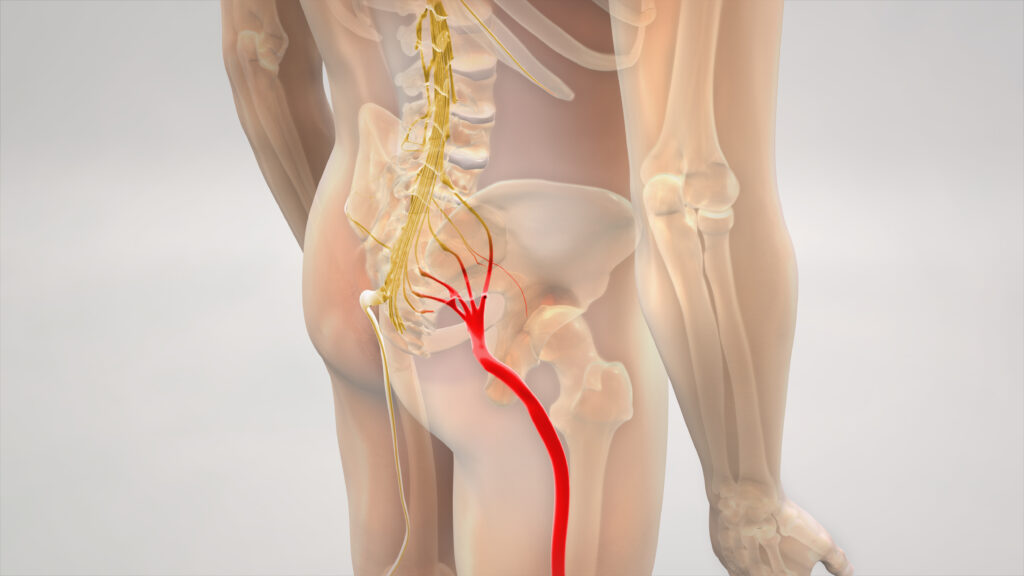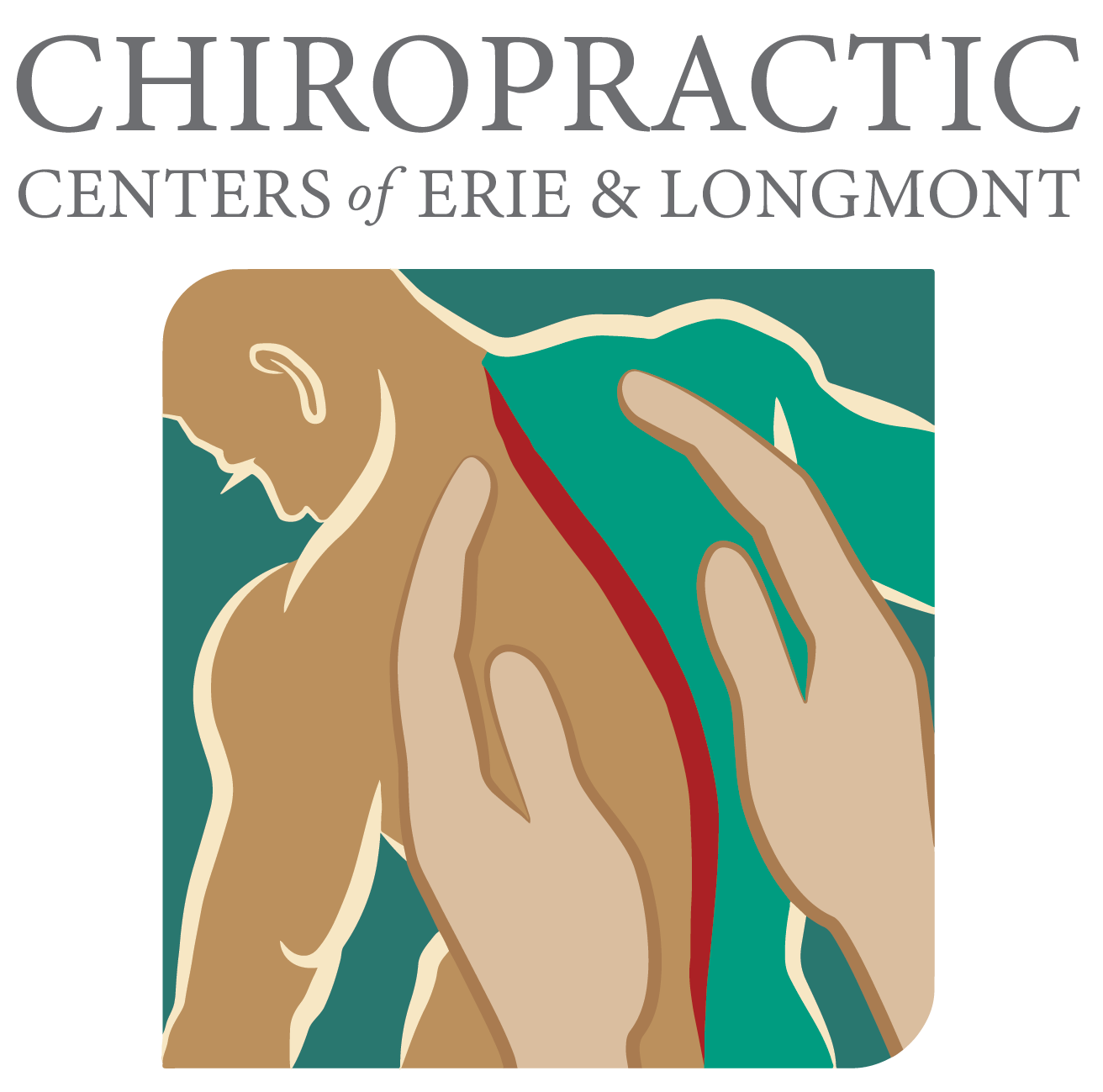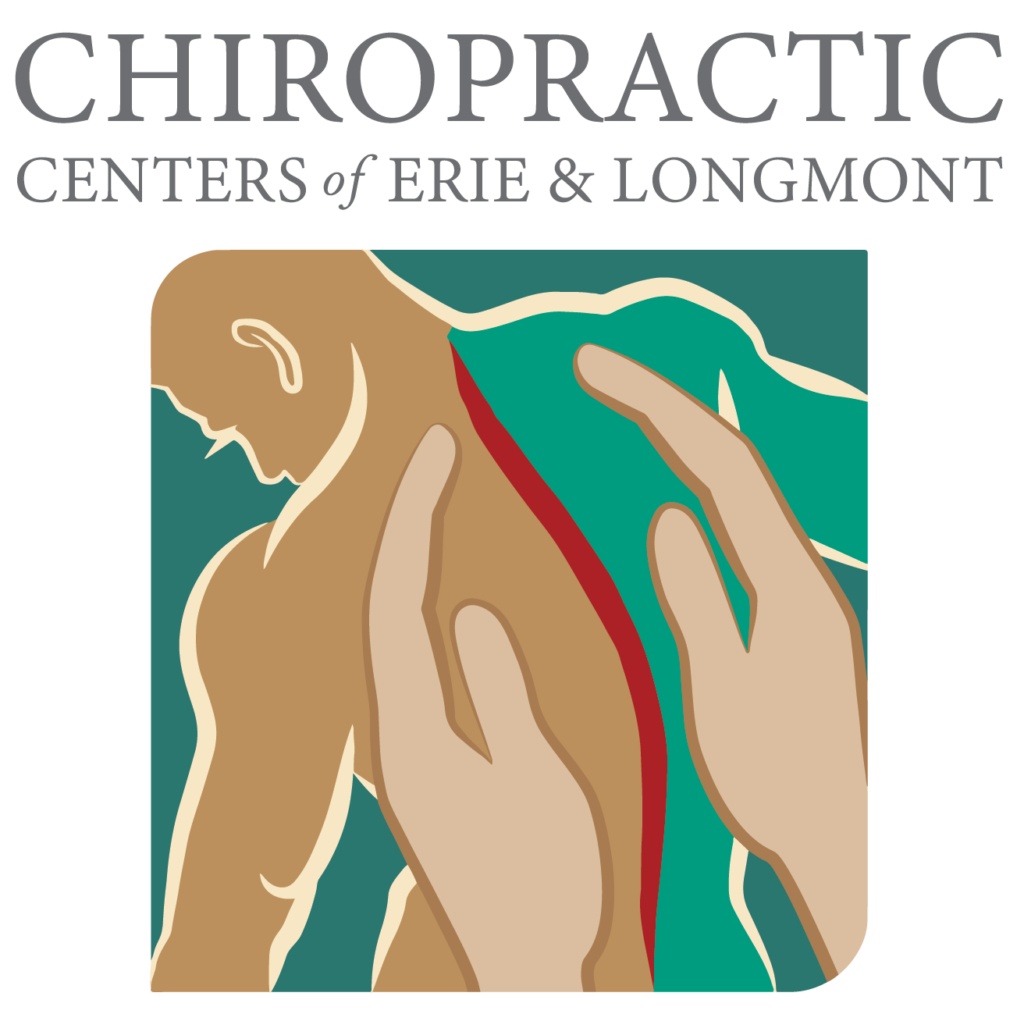Chiropractic Care for Sciatica

If you suffer from sciatica, you know the pain and discomfort it can bring. Numbness, tingling, and sometimes even full-body pain can make it difficult to do basic everyday activities. That is why increased people are turning to chiropractic care as a proven form of non-invasive, natural treatment for sciatica. Chiropractic care provides a comprehensive approach to relieving pain and discomfort, as well as correcting misalignments in the spine which can be the root cause of sciatica. In this post, we will explore how chiropractic care can help manage sciatica and explain why it is an increasingly popular choice for those seeking natural pain management without the invasiveness of surgery. Read on to learn some of the benefits of chiropractic care for sciatica and how to use it to improve your symptoms.
Quick Breakdown
Chiropractic care can help reduce pain and other symptoms of sciatica through adjustments, myofascial release, and therapeutic exercises. It can also help restore spinal health, improve range of motion, and prevent the condition from reoccurring.
What is Sciatica?
Sciatica is a painful nerve condition that affects millions of individuals around the world each year. It is estimated that between 3-5% of people experience symptoms related to sciatica at some point in their life. Sciatica, defined by the Mayo Clinic, “is a pain that originates along your sciatic nerve” which can be traced from the lower back area down through the hips, buttocks, and legs. There are two primary causes of this condition: either direct pressure on the nerve itself due to another medical condition such as a herniated disc, or irritation of the nerve caused by other complications such as spinal stenosis.
While some medical professionals recommend rest and physical therapy as effective treatments for sciatica, many others believe chiropractic care can provide patients with both short-term relief and long-term solutions. Research into how chiropractic treatment improves sciatica symptoms has found positive results, including improved range of motion in the lower back region, increased joint mobility and flexibility, decreased pain levels, and improved posture. In addition to this evidence, many patient testimonials have reported considerable reductions in pain after receiving chiropractic adjustments for sciatica symptoms.
Chiropractic care can offer several benefits for those suffering from sciatica – but it is important for individuals to recognize that this type of treatment is not suitable for every situation. A thorough examination will be necessary by a doctor or physician before a complete diagnosis can be made and an appropriate course of treatment put into effect.
The jury is still out on whether chiropractic care can effectively treat sciatic nerve pain – but it’s undeniable that this type of therapy can make an impactful difference when it comes to relieving certain types of discomfort associated with this condition. Now let us explore this further by looking at the common symptoms associated with sciatic nerve pain and how chiropractic care can help address them specifically.
Symptoms of Sciatica
Sciatica is an uncomfortable condition that can be characterized by pain, numbness, and tingling that radiates from the lower back along the sciatic nerve all the way down to the legs. It often gets worse when sitting for extended periods of time or with certain motions such as bending over or coughing. Pain may also worsen at night and may even prevent a person from being able to sleep properly. In addition to pain, some people may experience feelings of pins and needles, muscle weakness, and/or difficulty controlling their bladder or bowels.
The cause of sciatica is often debatable. On one hand, it has been documented in some cases to be caused by conditions such as spinal misalignment or a herniated disk that places pressure on the sciatic nerve. On the other hand, it is possible for someone to have no underlying health issue causing sciatica but still experience its symptoms – this type of sciatica is often referred to as “idiopathic”.
No matter what the source of sciatica may be, it can lead to debilitating pain and discomfort that can interfere with a person’s day-to-day activities. Fortunately, there are treatment options available to help alleviate these symptoms.
At this point, we have discussed what sciatica is and some of its potential causes, and now it is time to explore how diverse types of chiropractic care can help relieve pain and discomfort associated with sciatica.
Must-Know Highlights
Sciatica is an uncomfortable condition that causes pain, numbness, tingling, pins and needles, muscle weakness, and a loss of bladder or bowel control. Its cause is debatable and can range from an underlying health issue to no underlying issue at all (idiopathic). Treatment options exist to help alleviate its symptoms and one such option is chiropractic care.
Different Types of Chiropractic Care for Sciatica
Chiropractic care is an alternative health option that focuses on the musculoskeletal system. When it comes to sciatica, chiropractic care provides a non-surgical treatment that assists with pain relief and discomfort. While there are many approaches to treating sciatica, diverse types of chiropractic care may be used depending on the severity and individual needs of the patient.
One generic form of chiropractic care for sciatica includes manual manipulation or adjustment. This involves a chiropractor using their hands to apply pressure to specific areas of the spine to realign vertebrae, ease pressure from nerve roots, and improve overall joint motion. The goal is to reduce inflammation and alleviate pain associated with sciatica. Studies have shown that manual manipulation can provide short-term relief for many sciatica patients when combined with other forms of treatment such as physical therapy, medications, and lifestyle modifications.
Another type of chiropractic care for sciatica is spinal decompression therapy. This therapy utilizes traction on the spine to separate the vertebrae, allowing the vertebral discs to become more hydrated while excess pressure is relieved from pinched nerves. There are some studies that suggest that this type of therapy reduces inflammation and can help ease pain in individuals with sciatica.
Finally, some chiropractors will prescribe exercise programs as part of a chiropractic care plan for their patients with sciatica. Exercises like stretching, strengthening, and low-impact aerobics activities help build up the muscles around the affected area which can improve flexibility and reduce inflammation. Additionally, these exercises release endorphins which function as natural pain-relief agents in the body.
As any treatment plan related to sciatica should be tailored to individual needs, what works for one person may not be recommended or effective for another. However, understanding all available treatments may provide an opportunity for people diagnosed with this condition to explore what might work best for them and find relief from their pain and discomfort. Through manual manipulation, spinal decompression therapy, and appropriate exercises developed by a healthcare provider, those affected by sciatica may find much-needed relief through chiropractic care. With a successful treatment program in place, many individuals notice results relatively quickly while continuing along the path toward lasting recovery over extended periods of time.
Manual Manipulation
Manual manipulation, which involves the chiropractor manipulating a person’s joints and muscles by hand, is another type of chiropractic treatment that may be beneficial for sciatica sufferers. It usually involves rhythmic massage-like motions on the affected area. During manual manipulation, your chiropractor can apply pressure to specific areas to relieve tension as well as improve range of motion and flexibility. Increased motion and flexibility can often help relieve pain caused by sciatica.
Manual manipulations are generally safe and do not cause pain or discomfort. However, there may be some risks involved depending on the person’s health problems or underlying health conditions. For example, if the person has osteoporosis or has had recent joint surgery, manual manipulation may not be recommended. Therefore it is important for the chiropractor to take into account any potential risk factors before proceeding with manual manipulation for a patient with sciatica.
Proponents of manual manipulation argue that it can be an effective way to treat sciatica due to its ability to improve mobility and range of motion in the affected area, increase oxygenation of soft tissues, reduce muscle tension, and reduce pain levels. Also, manual manipulations can provide a sense of relaxation to sciatica patients which can contribute significantly to the overall healing process.
Whether or not manual manipulation is right for you should ultimately be decided by your chiropractor after considering all factors associated with your individual condition. Regardless of what side you fall on in terms of its efficacy in treating sciatica, it is important to consider such treatments when attempting to find pain relief from this condition.
Regardless of how you feel about manual manipulation for sciatica treatment, spinal adjusting has become an increasingly popular form of treatment for those suffering from this condition. Spinal adjusting involves the use of carefully applied force aimed at realigning misaligned vertebrae to promote proper alignment structure of the spine, thus alleviating pain associated with nerve compression and irritation caused by sciatica.
Spinal Adjusting
Unlike manual manipulation, spinal adjusting is a chiropractic technique that uses specialized adjusting instruments to apply a controlled and gentle force to the spine. Proponents of this technique argue that it is a more precise and specific approach in comparison to manual manipulation and can often provide faster results. Supporters further claim that spinal adjusting is an appropriate treatment choice for those suffering from sciatica as it applies only enough pressure to correct the misalignment, allowing for inflammation and pain to be reduced.
While spinal adjustments are among the most popular forms of chiropractic treatment, they may not always be necessary or even recommended if certain criteria are met. Exercises and stretches can help improve posture, core strength, and flexibility which can lead to long-lasting relief while avoiding any discomfort or additional side effects associated with a spinal adjustment. Therefore, it is important to recognize the value of these therapies alongside spine manipulations to achieve optimal outcomes for those suffering from sciatica pain.
Exercises and Stretches
The previous section noted that chiropractors may also provide other treatments to help improve symptoms of sciatica, including spinal adjusting. Exercises and stretches can be another form of treatment to help relieve pain and discomfort associated with sciatica. They are designed to help build strength, flexibility, and stability around the spine, supporting the muscles and ligaments that bind it together.
Stretching can help reduce muscle spasms associated with sciatica and loosen tight muscles in the hips and legs. A range of exercises can target specific areas affected by the pain, such as those targeted at strengthening several core muscles or stretching the glutes. Additionally, low-impact activities like swimming or walking can be helpful for restoring function as well as improving circulation throughout the body.
Depending on individual circumstances, exercises may or may not be beneficial for managing sciatica. While many people find benefits from exercising with sciatica, some may find that exercise aggravates their symptoms because of an underlying structural issue. Therefore, it is important to consult a healthcare professional before engaging in any type of exercise program if you suffer from chronic sciatica. Conversely, your healthcare provider may recommend that you improve your overall physical fitness level even if you do not currently experience any chronic pain due to sciatica to prevent future flare-ups or exacerbations.
In conclusion, there are both risks and benefits to performing exercises for sciatica relief. It is important for individuals to discuss their case with a professional healthcare provider before beginning any exercise regimen or program to determine what path is best for them to take. Based on this information about adjusting spinal alignment and exercising/stretching for relief, let us look further at how chiropractic care can provide patients with additional benefits from treating sciatica pain.
Benefits of Chiropractic Care for Sciatica
The stretches and exercise that a patient can practice ameliorating the pain associated with sciatica can be beneficial when combined with chiropractic care. Chiropractic care has many potential benefits for those experiencing sciatic nerve pain, including improved alignment of the spine, increased ability of the body to heal itself, improved range of motion, and decreased muscular tension.
Proponents of chiropractic care argue that an adjustment of the spine can help restore structural balance and improve nerve sensitivity, potentially diminishing the symptoms of sciatica. Studies have also suggested that chiropractic treatment may help gait abnormalities, and lower back pain, and provide lasting relief to sciatica sufferers without complications or side effects. A review published in 2012 concluded that manipulation therapy such as chiropractic care was effective in reducing the intensity of chronic lower back pain associated with nerve root involvement.
Whether one believes in its efficacy or not, it is clear that there are potential benefits to seeking out chiropractic care for the relief of sciatic nerve problems. For those who wish to explore this treatment option further, it is important to consider what type of care may be best for their individual circumstances prior to beginning treatments.
What to Consider Before Choosing Chiropractic Care
When considering chiropractic care for sciatica, it is important to understand the risks and benefits associated with this approach to healthcare. While chiropractic care can be a beneficial form of treatment that can help reduce pain and discomfort associated with sciatica, there are also some potential risks associated with this form of therapy.
One thing to consider when deciding whether chiropractic care is the right choice for you is whether it is covered by your health insurance plan. As with any type of medical treatment, the cost of chiropractic care can vary widely depending on the geographic area, type of provider, and services rendered. Before selecting a provider, check with your health insurance plan to determine coverage details, such as if there is a co-payment or if your plan covers part or all your visit expenses.
Another crucial factor to consider when deciding whether to pursue chiropractic care for sciatica is safety. While there are several safe techniques used in chiropractic care, there have been rare, reported instances of adverse effects resulting from manipulation techniques. It is essential to find a licensed and qualified chiropractor who has experience treating patients with conditions related to your own; this includes making sure they are up to date on techniques and safety protocols. Additionally, you should educate yourself on the different techniques used in chiropractic care such as spinal manipulation and soft tissue therapies, so you can make an informed decision about what type of care you want to receive.
Services
What We Treat
Patient Types
FAQ
Frequently Asked Questions Answered
Chiropractic care is known to be an effective solution for sciatic nerve pain. This type of care works by gently realigning misaligned bones and joints, which can relieve pressure on the affected nerve. This reduces inflammation and allows for improved mobility and range of motion. Chiropractic adjustments can also help improve circulation throughout the body, which can reduce nerve pain. Additionally, chiropractors may recommend exercises or stretches tailored to a patient’s specific condition that can help to further promote flexibility, strength, and coordination. Through these methods, chiropractic care helps to provide relief from sciatic nerve pain, allowing patients to maintain an active lifestyle without discomfort.
The benefits of chiropractic care for sciatica are numerous. Primarily, chiropractic care can help reduce pain and discomfort associated with the condition. Studies have found that chiropractic adjustments can effectively manipulate the spine to reduce inflammation and tension around the sciatic nerve, relieving sciatica pain. Additionally, regular chiropractic care can help improve mobility and flexibility in the back, hips, and legs by adjusting misaligned vertebrae which may be causing pinching of the sciatic nerve. Chiropractors may also recommend lifestyle changes such as stretching exercises or dietary modifications to further treat the issue at hand. Overall, these treatments can help provide lasting results by targeting the root cause of your sciatica rather than just providing temporary relief.
Studies suggest that chiropractic care can be surprisingly effective when it comes to relieving sciatica pain and discomfort. A recent randomized study compared the effects of three treatments (chiropractic care, physical therapy, and home exercise) for patients with sciatica. The researchers found that the combination of chiropractic care and physical therapy was significantly more effective than either treatment alone in terms of reducing pain and disability. Additionally, a systematic review of twelve studies concluded that spinal manipulative therapy (SMT) was superior to other treatments for sciatica in terms of long-term pain relief and improved functional ability. Taken together, these findings suggest that chiropractic care can be a safe and effective treatment option for those suffering from sciatica.

